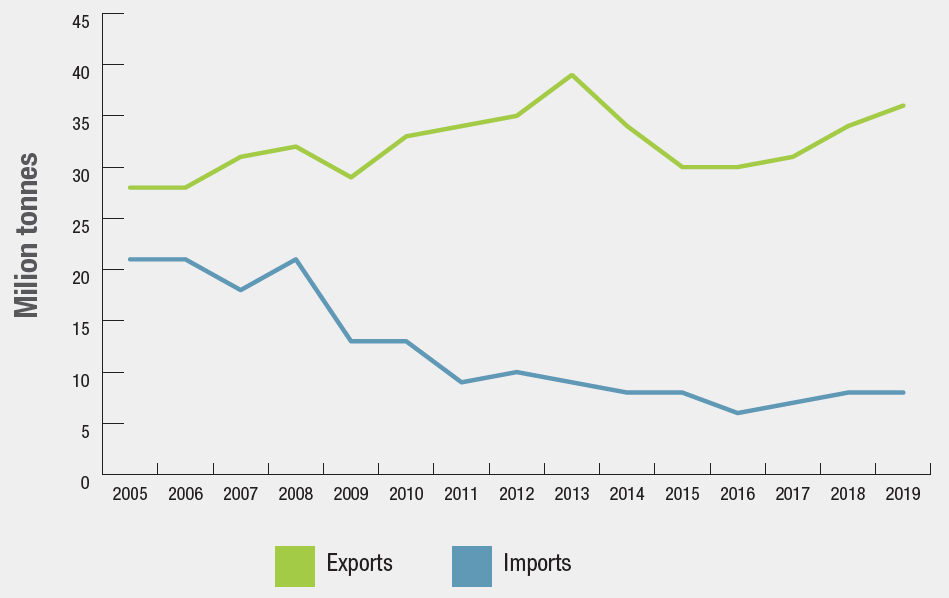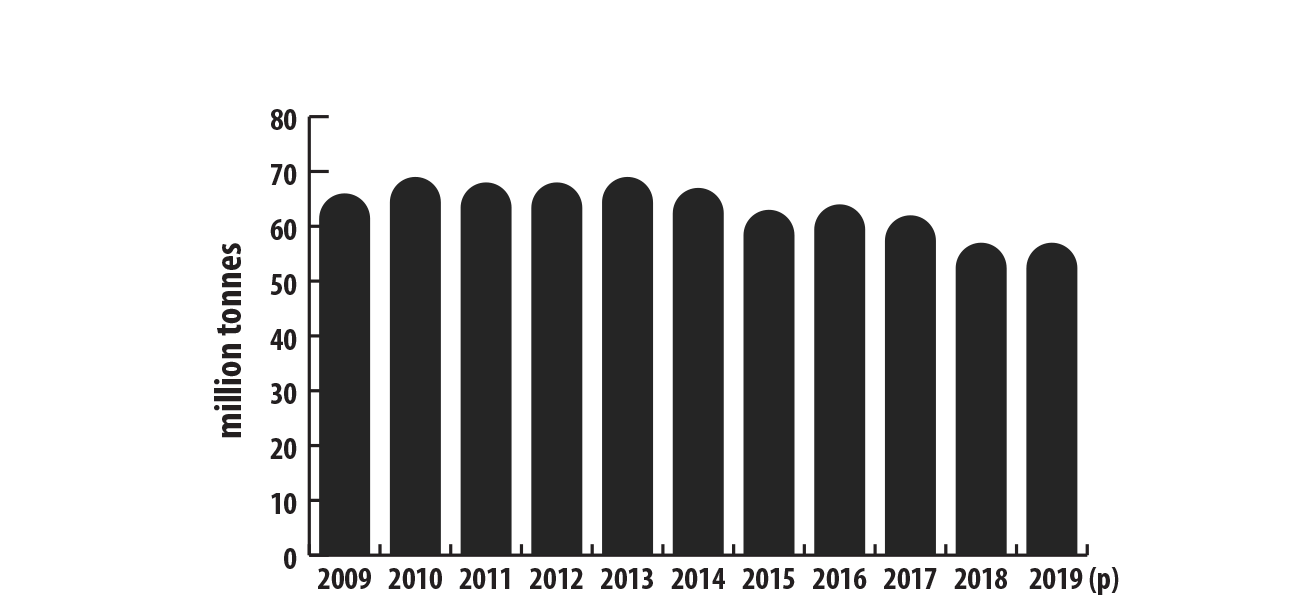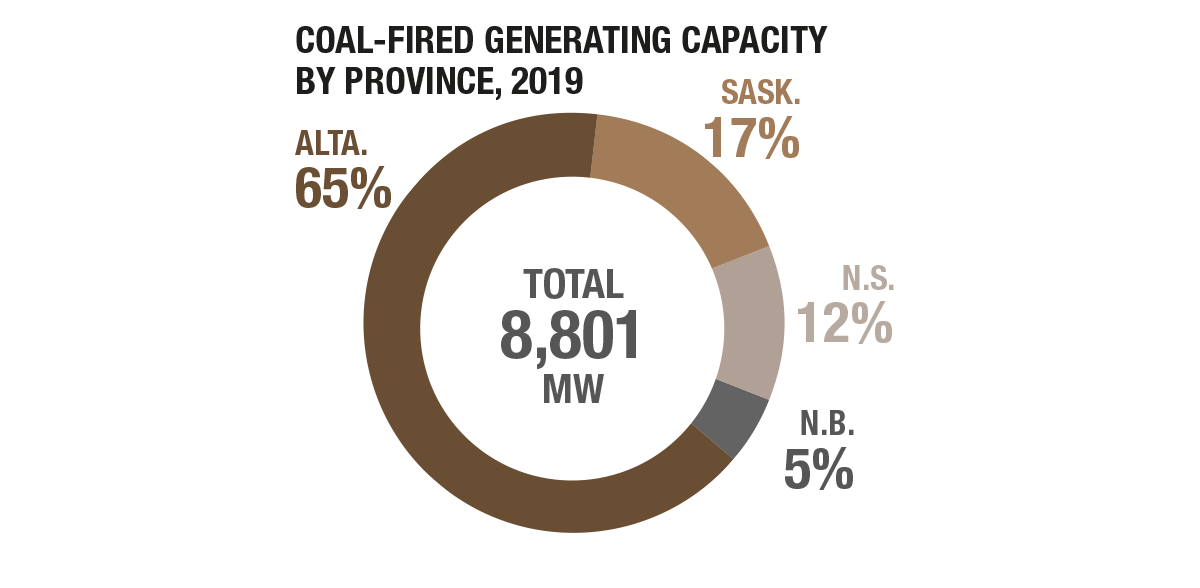Ember facts

Char is an organically derived physical. It is formed from the remains of decayed establish bodily compacted into a opaque through with millions of years of chemical changes below pressure and heat. Its rich carbon contented gives coal most of its energy content. When coal is burned in the presence of strain or oxygen, heat is free.
This energy can and then be reborn to other forms of functional energy. Primary applications for coal are thermal (e.g., electrical energy generation) and metallurgical (e.g., coking or steelmaking coal).
Key facts
- The main use of coal is electricity generation
- Coal is as wel a key ingredient in the manufacturing of brand and cement
- Canada's coal production in 2019 was 57 meg tonnes
- Canada exported 37 jillio tonnes of ember and imported 8 million tonnes in 2019
- Canada is the world's fourth largest exporter of metallurgic coal, afterward Australia, the United States and USS
- Alberta and British Columbia produced 83% of Canada's coal.
- In 2018, the Government of Canada declared final regulations to phase-down time-honoured fueled electricity by 2030.
Learn more than about ember
 Ember industry
Ember industry
In 2017, coal made up 27% of the world's energy supply. In Canada, many parts of the nation have abundant low-cost, domestic ember, while other regions have prosperous entree to an international supply.
The Canadian ember manufacture produces coal for use in metallurgical applications (e.g., coking or steelmaking) and thermal applications (e.g., electricity generation).
Closely incomplete of the ember produced in Canada is thermal and half is metallurgical. Some power-generating companies not only use up coal for electricity generation but also own coal mines or are up to her neck in coal yield themselves. Other companies generate electricity from purchased ember.
 International circumstance
International circumstance
Global coal production in 2019 is estimated at 7.9 billion tonnes, increasing by 116 cardinal tonnes from 2018. The top 5 producing countries accounted for 79% of the global's ember production.
World coal yield, 2010–2019 (p)

Text version
This barricade graph shows the world's period of time char production from 2010 to 2019. Production in 2010 was 7.2 one million million tonnes. It and then grew, peaking in 2013 at 7.9 billion tonnes. Production in 2019 was 7.9 billion tonnes.
Find out how Canada's ember ranks along an international scale:
World Production
| Rank | Country/region | Million tonnes | Percentage of total |
|---|---|---|---|
| 1 | China | 3,693 | 47% |
| 2 | India | 769 | 10% |
| 3 | United States | 640 | 8% |
| 4 | Indonesia | 616 | 8% |
| 5 | Australia | 503 | 6% |
| 13 | Canada | 57 | 1% |
| - | Another countries | 1,643 | 21% |
| - | Total | 7,921 | 100% |
World exports
| Flagrant | Country/region | Million tonnes | Percentage of total |
|---|---|---|---|
| 1 | Indonesia | 455 | 32% |
| 2 | Australia | 393 | 27% |
| 3 | Russia | 217 | 15% |
| 4 | Integrated States | 84 | 6% |
| 5 | South Africa | 81 | 6% |
| 7 | Canada | 36 | 3% |
| - | Other countries | 170 | 12% |
| - | Total | 1,436 | 100% |
World imports
| Rank | Country/region | Jillio tonnes | Percentage of tot up |
|---|---|---|---|
| 1 | Red China | 298 | 21% |
| 2 | Bharat | 247 | 17% |
| 3 | Japan | 185 | 13% |
| 4 | Republic of Korea | 130 | 9% |
| 5 | Taiwan | 67 | 5% |
| - | Other countries | 495 | 35% |
| - | Total | 1,424 | 100% |
World proved militia
| Rank | Country/part | Million tonnes | Per centum of total |
|---|---|---|---|
| 1 | United States of America | 250,219 | 23% |
| 2 | Union of Soviet Socialist Republics | 162,166 | 15% |
| 3 | Australia | 149,079 | 14% |
| 4 | China | 141,595 | 13% |
| 5 | India | 105,931 | 10% |
| 16 | Canada | 6,582 | 1% |
| - | Else countries | 254,746 | 24% |
| - | Total | 1,069,636 | 100% |
 Barter
Barter
Canada's imports of coal imports induce trended downwards for over a decennary, while exports have held steady. Canada exports about fractional of its production. The majority of Canada's char exports ecstasy to Asia, which is placid a significant consumer.
Canadian coal trade, 2005–2019

Text version
From 2005 to 2013, coal exports hyperbolic from 28 million tonnes to almost 40 million tonnes before levelling to approximately 30 million tonnes betwixt 2015 and 2017. Coal imports decreased from 21 million tonnes in 2005 to 7.6 million tonnes in 2018.
In 2019, Canada exported 36.5 million tonnes of coal around the world and imported nearly 8 million tonnes of coal, mostly from the Coupled States. Exports to the United States accounted for 2% of Canadian River coal exports, and represented 12% of aggregate Coalesced States coal imports.
Canada's exports are primarily metallurgical coal (95% in 2019).
Canadian exports and imports of coal (2019)

School tex version
In 2019, Canadian exports of coal were valued at 7.1 billion dollars. The major destinations for those exports were Confederate States Dae-Han-Min-Gook (25%), Japan (23%), Bharat (14%) and China (13%). Approximately 2 percent of Canada's ember exports are to the United States, representing 12% of U.S. coal imports. As for North American country char imports, 73% come up from the United States. Nearly fractional of all imports are used for the manufacturing of steel, the rest is for electricity generation.
 Uses
Uses
Coal is used for electricity generation, the manufacturing of steel and cement, and varied industrial and residential applications. Canada produced 57 Mt of coal in 2019, of which 53% is metallurgical coal used for blade manufacturing and 47% thermal coal used for electricity.
In Canada, 7.4% of electricity is generated with coal. Electrical energy generation consumed 26 Meitnerium in 2018, a 49% decrease from 50.7 Mt in 2008.
With the phasing out of coal-fired electrical energy by the Governing of Canada, zip produced by coal will be eliminated by 2030. That said, coal bequeath continue to be used for metallurgical processes.
Global char demand by sector, 2019 (p)

Text edition rendering
This circular graph shows the major global sources of demand for ember in percentages in 2019. The largest share of coal was used in electricity generation and heating (67%), followed by iron and brand industries (12%), residential, transaction and public services (3%), and other sectors (18%).
 Canadian production
Canadian production
North American country production of coal has been trending behind over the past decade and was 57 jillio tonnes in 2019.
Canadian char production, 2009–2019

Text version
This bar graph shows Canada's annual mine production of ember from 2009 to 2019. Production was 66 million tonnes in 2009, followed away some period peaks until 2014, when production began trending down. Production in 2019 stayed directly from 2018 at 57 million tons.
Coal production
by province, 2019

Textual matter version
Canada produced 57 megatonnes of coal in 2019. Production by province is as follows: British Columbia University 48%, Alberta 35%, Saskatchewan 16%, and Nova Scotia at 1%.
Coal fired generating capacity Footnote * aside province, 2019

Schoolbook version
Canada has a char-pink-slipped electricity generating capacity of 8,801 MW in 2019 (excluding temporarily deactivated electrical capacity). Alberta has the largest symmetry of fueled generating capability at 65%, and is followed by Saskatchewan (17%) and Nova Scotia (12%).
Coal victimised for electrical energy generation

Text version
Electrical energy generation consumed 26 Mt in 2018, a 49% diminish from 50.7 Mt in 2008.
 Prices
Prices
After a visor in 2011, global prices for metallurgical ember started on a down trajectory until the last mentioned part of 2016, when it peaked at US$273 at the destruction of November. Since then, the prices give birth been declining, and have levelled at an average out of US$175 per tonne in 2019. Globally, thermal coal prices experienced a similar trend.
Australia, Colombia and South Africa are globally recognized as the three terminal markets that determine global thermal char prices. Coal prices waver with global economic conditions, and recent price increases have occurred in conjunction with temporary mine disruptions in Australia and mine production curtailments in Chinaware.
Global coal prices, 2009–2019

Text version
This graph represents the monthly coal prices (USD) from 2009 to 2019
Discover out more about minerals and metals facts
- See modified:
how much coal is burned to produce 1 kwh
Source: https://www.nrcan.gc.ca/our-natural-resources/minerals-mining/minerals-metals-facts/coal-facts/20071
Posting Komentar